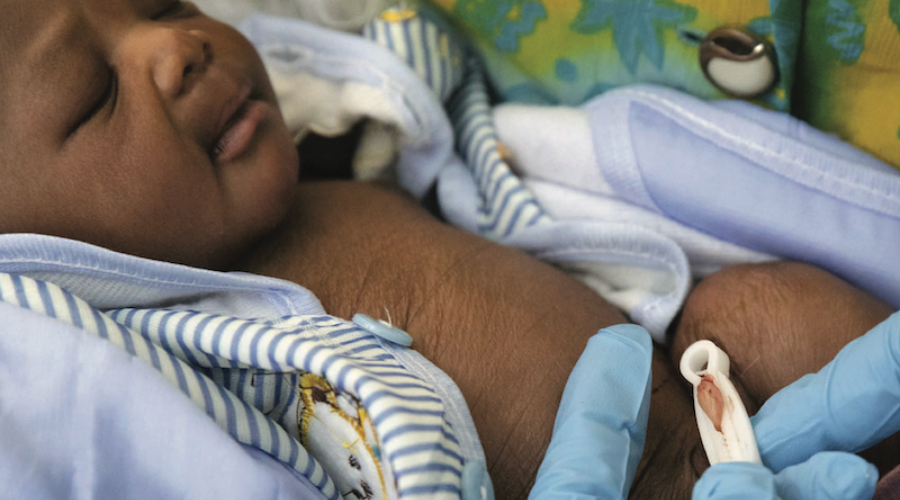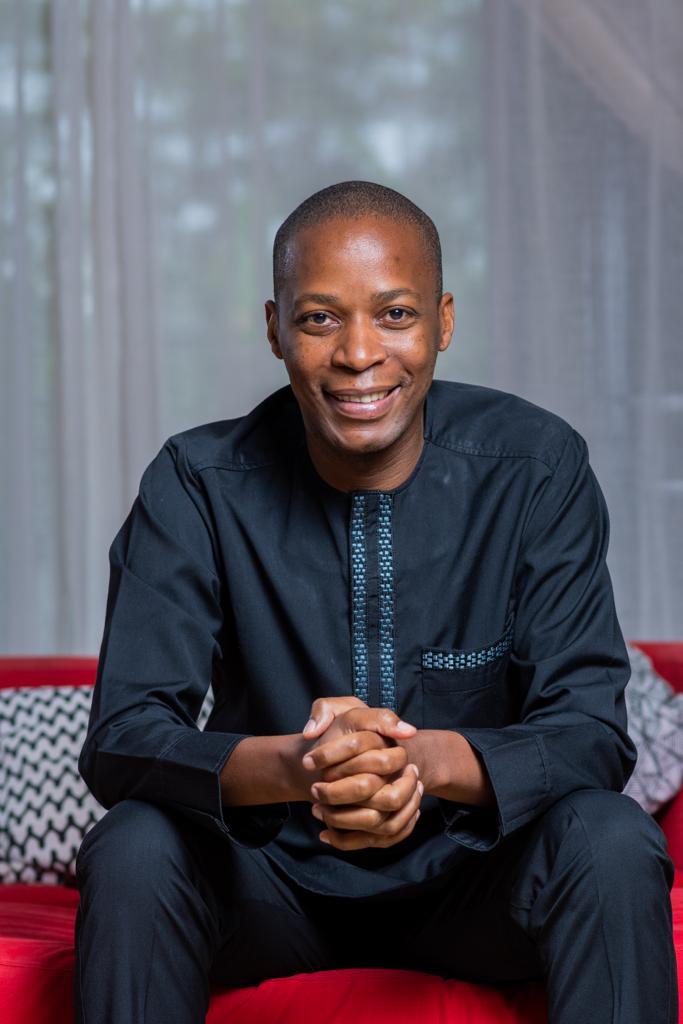The key to a successful corporate partnership – finding the ‘sweet spot’
According to a 2024 research report by think tank What Impact*, almost four in 10 voluntary organisations want to collaborate with private sector organisations but struggle to find new partners. So what can you do to really connect with corporate partners and ensure a long and healthy relationship? In this article, Keith Kibirango celebrates a partnership he admires, and explains why it took a bit of time (and a lot of careful collaboration) to get it just right.
- Written by
- Keith Kibirango
- Added
- October 23, 2024

Often, it takes time to develop a corporate partnership that will stand the test of time.
The relationship between global healthcare company GlaxoSmithKline (GSK) and international charity Save the Children has been hugely successful. They have managed to find the ‘sweet spot’ between their two organisations – the place where both benefit from working together. But it didn’t happen overnight.
I believe all fundraisers can learn from this partnership journey, whether you are at a big charity like Save the Children or a much smaller organisation.
To understand the longevity of this relationship, let’s start at the beginning.
GSK is a British multinational pharmaceutical and biotechnology company with headquarters in London. They have been supporting Save the Children for many years. But in the early days of the relationship, this wasn’t a partnership that was bringing in huge income for the charity. GSK were giving between £10,000 and £50,000 a year. And as fundraisers who raise money from corporate organisations will know, this can often be the case with new partners. It tends to look a bit like this:
Something happens at your organisation.
You write a proposal.
You pick up the phone.
They give you £50,000.
Then something else happens.
You write a proposal.
You pick up the phone.
They give you £10,000.
Again, something else happens…
…and so on and so forth.
But this pattern often means we create a sort of ‘dependency syndrome’ where the company you are speaking to will sometimes say yes, or sometimes say no.
So how do you as a fundraiser break through this pattern?
How do you get to the point where the corporation in question is actually right there, intertwined in the ‘DNA’ (Deoxyribonucleic acid) of the partnership and the DNA of your organisation?
Well, in 2013, Save the Children had the same problem. They knew they needed to address this and say to GSK – ‘how can we make you look better and how can you help us to save children’s lives?’
They needed to find the all-important ‘value added proposition’ so they could achieve an ambitious, scaled relationship where there was security for Save the Children as well as value for GSK too.

And that’s when the magic happened.
They agreed to sit down in a room to find that value added proposition. It didn’t matter how long it would take. Together they searched for a way to create a relationship that would work for everyone.
Save the Children’s corporate fundraisers and GSK’s research and development team worked together on this, and it was not a quick fix. It took about eight months to identify that ‘sweet spot’. People were brought into the room. People were brought out of the room. In time, GSK saw that Save the Children were going to be able to bring the company into communities where they couldn’t currently reach – and together they found that all-important value-added proposition.
A mouthwash ingredient was turned into to a potentially life-saving medicine.
The ‘sweet spot’ between GSK and Save the Children turned out to be a gel made from chlorhexidine – a compound commonly found in mouthwash – that could be applied to the umbilical cords of babies to help prevent infection.
This excerpt from a GSK press release explains how the partnership with Save the Children led to the development of this important and life-saving initiative:
‘Infection is a major cause of newborn mortality, which can be caused by bacteria entering the body through a newly-cut umbilical cord. This is more likely to happen in low-income settings across sub-Saharan Africa and Asia where more births take place at home and unsterile materials, such as dung and ash, may traditionally be used on the umbilical cord stump. In 2012, a United Nations (UN) Commission Report named chlorhexidine for newborn cord care as an overlooked “life-saving commodity” that, if more widely accessed and properly used, could potentially save 422,000 neonatal lives over five years.
In response, GSK worked to reformulate the antiseptic solution used in its Corsodyl™ mouthwash into a gel (chlorhexidine digluconate gel 7.1 per cent, equivalent to 4 per cent chlorhexidine), incorporating Save the Children’s expertise in reaching some of the most vulnerable and marginalised children.
Insights and guidance from Save the Children informed key decisions in the development programme. A gel formulation was selected and developed to be stable in high heat and humidity, avoiding the need for refrigeration, to simplify distribution to remote communities. The gel is packaged in individual single-use foil sachets which can be opened without scissors. Pictorial instructions on the sachet and packaging are provided to help mothers who may not be able to read to apply the gel appropriately.’
Now this is something that GSK couldn’t have done alone. And it’s something that Save the Children couldn’t have done alone.
It’s an example of why it pays for fundraisers to think about what we bring to the table and how a partner can enhance our work. It reminds us to bring the company into the DNA of our organisation. Because right now, it’s very unlikely that GSK will walk away from this fantastic relationship – they have seen the huge value in it.
So, when you are looking for your next partnership, step back and think of the value-added proposition, think of the scale and be ambitious. It doesn’t matter what size organisation you are. These same principles apply.
Remember, it goes beyond just funding. Because if you chase the money, you will get money. But if you chase the relationship, you will get the relationship, the money and then some. Just like Save the Children did here.
Today, this amazing corporate partnership works across 45 countries and reaches 2.8 million children. And the last time I checked with Save the Children; they were bringing in close to £5 million a year. That’s quite a jump from getting, at most, £100,000 a year to getting £5 million.
This was a value-added proposition that was worth taking the time to discover!

Seeing the partnership in action, saving children’s lives.
In a 2019 report produced by Save the Children, the charity shared the story of Sylvia and her son Brivian, explaining how they were helped by chlorhexidine gel:
‘Sylvia is 34 years old and lives in Bungoma County, Kenya with her son Brivian Kiplangat (four months old) and three older children.
Sylvia lost two of the six children to whom she has given birth. Her first-born child’s umbilical cord was infected, and he died 11 days after birth.
Her most recent baby, Brivian, was born in a health facility in 2017, enabling Sylvia to access chlorhexidine gel, which she applied to his umbilical cord. His cord did not get infected and healed quickly. Sylvia is grateful her baby did not get sick and reports that he is doing well. Infection, a major cause of newborn mortality, can be caused by bacteria entering the body through a newly-cut umbilical cord. This is more likely to happen in low-income settings across sub-Saharan Africa and Asia where more births take place at home and unsterile materials, such as dung and ash, may traditionally be used on the umbilical cord stump.
Over 30,000 newborns in Kenya have so far benefitted from the new chlorhexidine gel.’
© IMAGES: Save the Children, see links, captions and credits
Editor’s note: Keith worked at Save the Children UK as Head of Africa Philanthropy (2018-2021). He is currently CEO of New Global Markets Consulting.
You can find out more about the GSK and Save the Children partnership, by clicking here. There’s also a video which will help you see what the partnership has achieved for children since 2013.
This partnership was presented by Keith Kibirango at SOFII’s I Wish I’d Thought of That (IWITOT)’s tenth anniversary event in London, 2022. You can view a video of Keith’s presentation below – apologies for a few brief sound issues.
*Source: What Impact's September 2024, Nationwide Charity Report

















